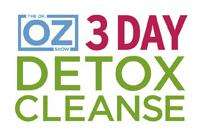 The Dietary Approaches to Stop Hypertension (DASH) Diet has been voted the number one overall diet for three years in a row. In order for a diet to contend for this title, it must be easy to follow, safe, effective for short and long term weight loss, nutritious, and be able to fight heart disease and diabetes.
The Dietary Approaches to Stop Hypertension (DASH) Diet has been voted the number one overall diet for three years in a row. In order for a diet to contend for this title, it must be easy to follow, safe, effective for short and long term weight loss, nutritious, and be able to fight heart disease and diabetes.
It was created by the National Institute of Health, and initially used to combat high blood pressure. With an extensive amount of research backing the diet, the foremost authorities are able to constantly keep up to date with publications. Evidence supports that the diet is incredibly effective.
Not only has the DASH Diet been found to reduce blood pressure, but it also reduces the risk of diabetes, strokes, and heart attacks. It has also been found to reduce cholesterol, some cancers, and kidney stones.
The diet is easy to follow, can be sustained over a lifetime, and is common sense healthy. Most importantly, the diet not only works, but leads to weight loss within a single week. Everything you eat on the diet can be found in any supermarket, and it is completely flexible.

The DASH Diet
Whole grains: Eat six to eight servings a day. This includes whole grain cereals, and whole grain breads. Make sure that “whole grains” is always the first item on any ingredient list.
Fruits and Vegetables: Eat four to five servings of each per day. These contain potassium, and are very filling, bulky foods that you want more of.
Low-fat Dairy: Eat two to three servings per day. This includes milk, cheese, and yoghurt. These items all contain calcium and protein.
Lean Meat (including poultry and fish): Only eatsix or fewer ounces per day. Chicken breast, lean pork, and seafood are good choices.
Nuts, Legumes, and Seeds: Only eat four to five servings per week. Nuts, like almonds and cashews, have heart healthy fats that are good for you.
Sweets: Limit these to five or fewer servings per week. Marla suggests that you save these up for something special, rather than wasting them on little snacks here and there.
Phase One
The first phase of the diet is all about learning how to eat properly. The idea is to fill up on lots of low calorie foods (vegetables). These get paired up with protein-rich foods that are heart healthy and will curb cravings.
For the first fourteen days, you will need to follow the guidelines of Phase One. You can eat unlimited servings of non-starchy vegetables, but must avoid fruit. Eat protein-rich foods that low in unsaturated fats (lean chicken, lean beef, low-fat cheeses, and nuts). Have heart healthy fats like extra virgin olive oil, salmon, and avocado. Avoid starches and sugars, as these will make your blood sugar levels fluctuate. If you drink caffeinated beverages, make sure you are drinking these with food, as they also raise blood sugar.
Phase Two
After the first fourteen days, you can move on to Phase Two of the diet; which is the one that will continue on for the remainder of the time you choose to stay on the DASH Diet. Fruit can be eaten again, as well as whole grains (like brown rice and cereals). Low-fat milk and yoghurt can also now be eaten, and even sugars are allowed, as long as they are eaten less than five times a week. Small servings of red wine are also allowed, and can be considered a serving of fruit.
Dr. Oz has put A seven day meal plan and dieting tools can be found online here.



